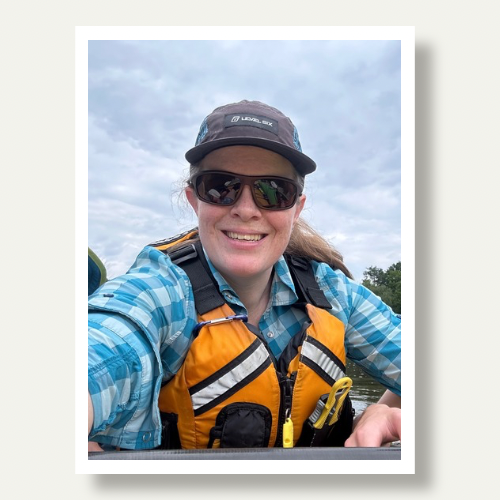
Family Camping Adventure Hub
Ready to start camping with your family, but not sure where to begin? Whether you’re pitching a tent in your backyard, exploring your first provincial park, or dreaming of a backcountry canoe trip, we’re here to make every step simple, joyful, and stress-free.
These beginner-friendly guides, real-world tips, and easy adventure ideas will help your family build lasting memories outdoors — one campfire, one starry night, and one muddy boot at a time.

Make your drive part of the adventure.
Heading to Algonquin, Killbear, or Sandbanks? Make the drive as fun as the campsite itself with our free guide to 40 Ontario Roadside Wonders — perfect for kid-friendly detours on your next trip. Get the Free Guide →
Start Here — Camping Basics for Families
New to camping? Start simple! These beginner-friendly guides will help you build outdoor confidence one step at a time.
- Make This the Summer Your Family Camps Together for the First Time
- How to Plan Your First Family Camping Trip (Without the Stress)
- The Complete Backyard Camping Guide for Families
- Essential Family Camping Gear: What You Really Need (and What You Don’t)
Easy First Camping Destinations
Ready to pitch a tent beyond your backyard? Discover beginner-friendly campgrounds and parks perfect for young adventurers.
- Easy Camping Destinations in Southern Ontario: Perfect First Family Trips
- 10 Best Provincial Parks in Ontario for Unforgettable Family Camping Trips
- Family Camping in Canada’s National Parks: What You Need to Know
Take It Further: National Parks and Backcountry Adventures
Feeling more confident? Explore new horizons with National Parks, simple backcountry trips, and overnight paddling adventures.
Family Camping Tips and Easy Camping Meals
From peaceful mornings to starry nights, little details can make a big difference. These tips, tricks, and simple meal ideas will keep your camping trips fun and stress-free.
- Camping with Young Kids: 10 Real-World Tips for Happy Campouts
- How to Pack a Cooler Like a Pro: 7 Easy Tips for Families and Campers
- Easy Camping Meals for Families: Stress-Free Ideas for Breakfast, Lunch, and Dinner
- Easy Backcountry Meals for Families (No Cooler Needed)
Looking for More Adventure Inspiration?
Grab your copy of Natural Escapes: The Ultimate Guide to Planning Stress-Free Family Adventures — and discover how small outdoor adventures can lead to a lifetime of memories.
Building Lasting Camping Traditions
Make memories that last a lifetime! Discover fun, simple traditions that will become the heart of your family camping adventures.
- 10 Fun Family Camping Traditions That Build Lifelong Memories
Stay Inspired
Join the free Paddles and Packs newsletter to get new outdoor ideas, free resources, and family adventure tips delivered straight to your inbox!
We’ve compiled a list of 5 essential tips for camping with young kids and we’ve made it easy for you to Pin it so you won’t forget!

Final Thoughts
Family camping adventures aren’t about flawless trips or picture-perfect campsites.
They’re about campfire giggles, muddy shoes, messy pancake breakfasts — and stories you’ll tell for years to come.
Every night under the stars builds confidence, connection, and memories your family will carry forever.
Let’s make your next outdoor adventure unforgettable.
Ready to Explore Even More?
Whether you’re dreaming of cozy campouts, paddling adventures, or growing outdoor confidence, there’s a whole world waiting for you. Explore the full Outdoor Adventure Launchpad and keep your family’s adventures rolling!
Hiking Adventures
Discover scenic trails, waterfall hikes, and kid-friendly routes that make hiking a joy for the whole family.
Explore Hiking Guide →Paddling Adventures
Ready to get on the water? Our family paddling guides make it easy to plan simple, safe outings by canoe or kayak.
Explore Paddling Guide →Adventure Mindset
Small steps. Big memories. Find encouragement, simple mindset shifts, and tips for embracing everyday outdoor adventures.
Explore Mindset Guide →Family Day Trips
Discover Ontario one day trip at a time. Our city-based guides make it easy to find fun, fresh-air adventures close to home.
Explore Day Trip Guide →Do you want to read this again later? We’ve made it easy for you to save this to your Family Camping Board on Pinterest.


Welcome to Paddles & Packs!
My name is Celeste, and I believe the best family memories are made outdoors.
Let’s build your family’s next adventure — together!
Recent Posts
- Uncover the Secrets of the Winter Squirrel Dreys Above Your Backyard
- The 5 Minute Outdoor Joy Booster For Parents
- Nature vs. Screens: How to Encourage Outdoor Play Without a Battle
- How to Pack a Cooler Like a Pro: 7 Easy Tips for Families and Campers
- 10 Easy Adventures That Get Kids Off Screens (Kingston Edition)
- 10 Easy Adventures That Get Kids Off Screens (Halton Region)
- 10 Easy Adventures That Get Kids Off Screens (Barrie Edition)


